Results of a Fan Shroud on the S4M
Published on:
The Skyreach 4 Mini (S4M) is a mini-itx case with a CPU air cooler height restriction of 45mm. This is quite the constraint, as there are a limited number of CPU coolers that are less than 45mm. Thankfully the creator of the S4M published their CPU cooler benchmarks where it’s concluded that Noctua’s L9i / L9a are the most practical.
The L9i is 37mm tall and a bit of math points us to 8mm of “wasted” space. This 8mm isn’t really a waste as there needs to be a gap between the fan blades and the case to mitigate turbulence. To better optimize this space the SFF community has created fan shrouds that fit on top of the fan like a funnel to reduce hot air recirculating. With Ryzen 5000 arriving shortly, I decided to test out this hypothesis. I’m interested in one of the new CPUs and I want to prepare for it as best as possible and see if undervolting will be the only thing necessary or if the power target needs to be adjusted. I don’t expect the system I’ll test the shroud on (undervolted Ryzen 2700) to drastically improve as it already runs at a cool 75C, but I believe that the improvement for a higher TDP CPU will be more significant.
I ordered the 92mm shroud from J-Hack. It’s tailored for the S4M and L9a. There are open sourced shrouds that one can 3D print themselves, but I went with J-Hack as I’ve ordered from them before and been pleased with the quality, customer service, and price.
A few days later the shroud arrived. Only the essentials included, the shroud and the m3 screws to replace those holding the current L9a fan in place.
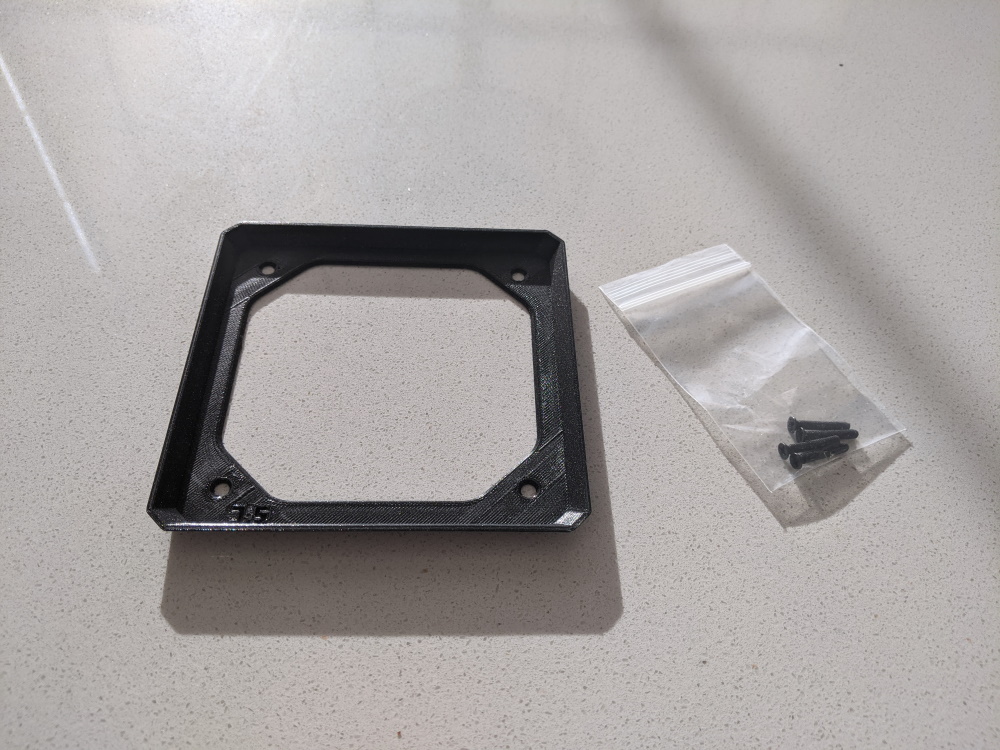
J-Hack 92mm shroud with accompanying screws. Height: 7.5mm
Installation into the S4M was simple. Take out the 4 screws holding the L9a fan in place and replace them with provided ones.
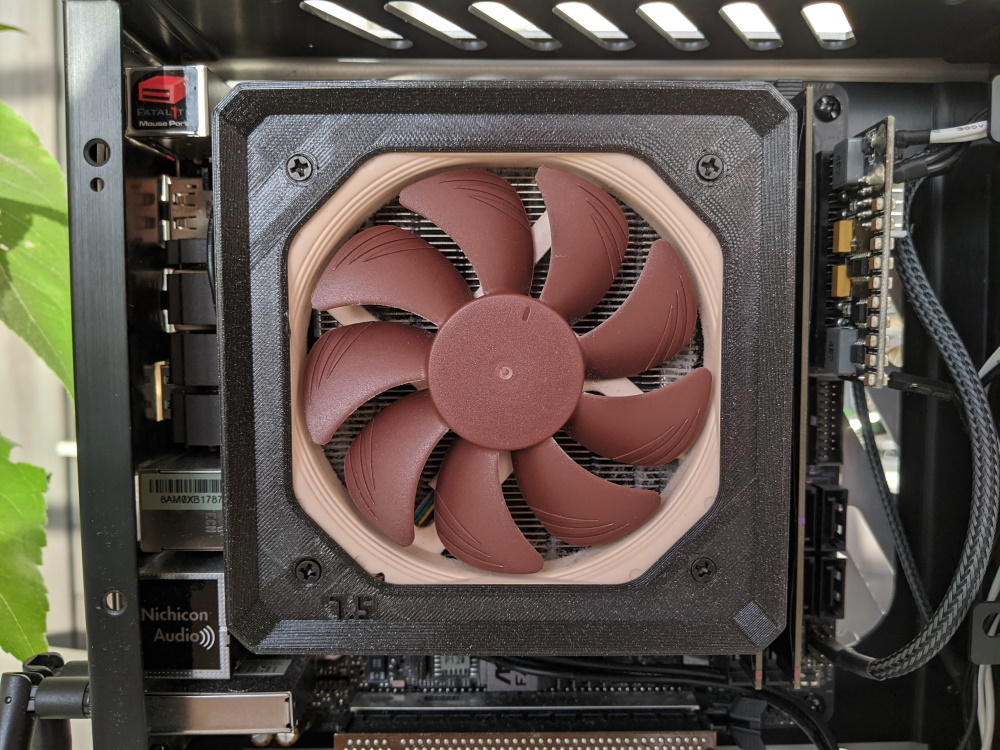
Closeup shot of the shroud
The combined color scheme is a bit wonky, so I may just have to buy myself a black chromax version to match.
Before making any system modifications, I like to quantitatively determine if the modifications have tangible results. I decided on running Cinebench R20 until a temperature equilibrium was reached, meaning the amount of heat being generated by the CPU was equal to the heat being expelled by the cooler. When the equilibrium was reached, I noted the cinebench score, CPU temperature, fan RPM, and CPU clockspeed. I record these in a spreadsheet to keep myself honest.
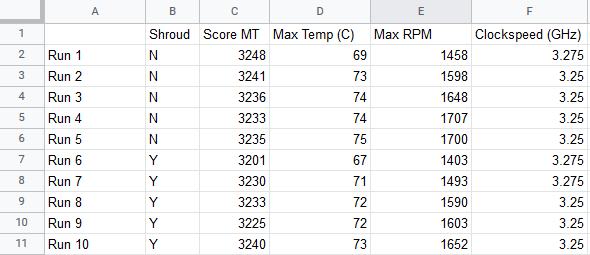
Google Sheets Data Table
🔗 The Results
The temperature dropped a couple degrees and the fans spins slightly slower:
- Ambient Room temperature 23C
- Max temperature: before: 75C | after: 73C
- Max fan rpm: before: 1707 | after: 1652
- All core clockspeed: unchanged
- Cinebench score: unchanged
While the benchmark is ongoing, I run a service called OhmGraphite that writes sensor data to an external service, so that I can create graphs. I would typically recommend someone just using hwinfo64 for ease of use, but here are the graphs from data that OhmGraphite generated.
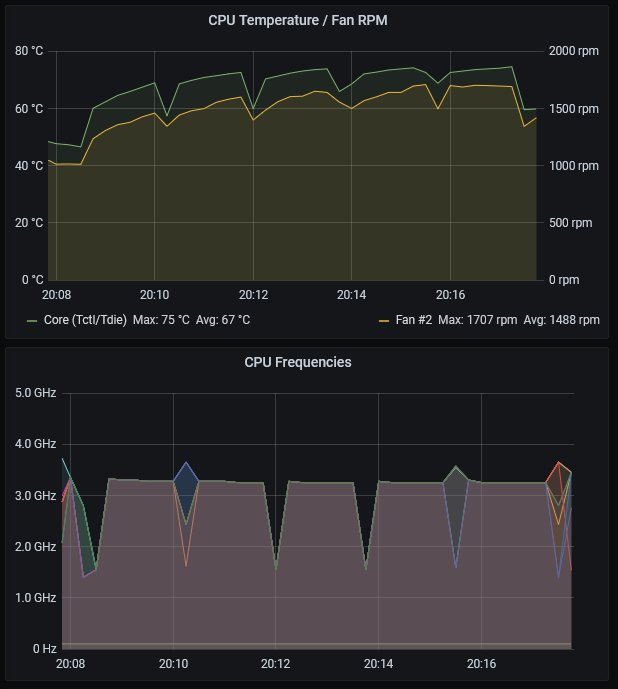
Temperature / Fan RPM / Clockspeed before shroud
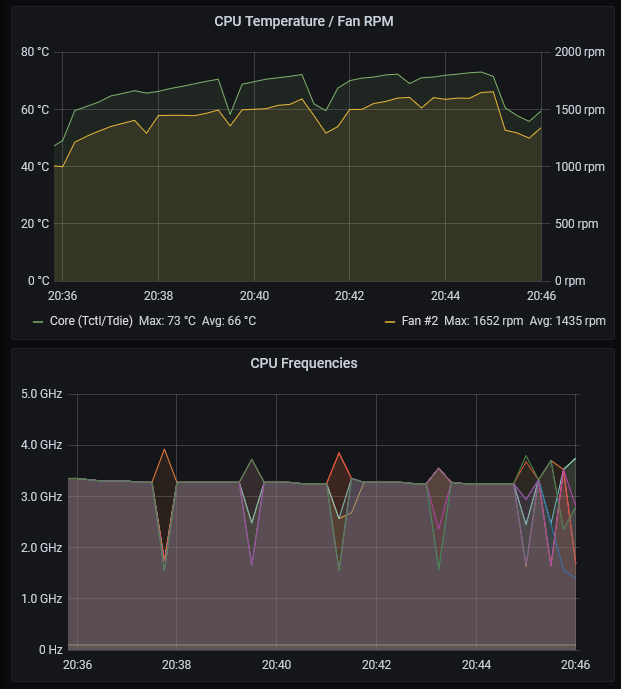
Temperature / Fan RPM / Clockspeed after shroud
🔗 CPU Cooler Alternatives
I want to mention a couple of CPU cooler alternatives for those who are willing to be a bit more risky. There’s the IS-47K and Alpenfohn Black Ridge. Both of these coolers are 47mm, 2mm officially too tall. A SFF forum member has fit them in by using 5mm standoffs, but others have found success in bending the heat pipes of these coolers or that manufacturing tolerances worked in their favor.
I didn’t go with either of these options. The shroud is the safer bet and I figure that this should be the first step in preparing for Ryzen 5000. If I find the shroud lacking, then these alternative coolers can be considered.
🔗 Conclusion
The fan shroud has a positive effect, but it is not pronounced. The CPU runs cooler and the fan spins slower, but the difference is verging on negligible. Still, it is an undeniably a positive difference and I suspect that if tested on a hotter CPU (and not an undervolted Ryzen 2700), the shroud’s effect would be greater. And if spending $16 (including shipping) makes something possible then I consider it well worth the cost.
In closing, here’s my full S4M build with several of J-Hack’s products (Distro 400, ONE2 Plugin 160, and now the fan shroud)
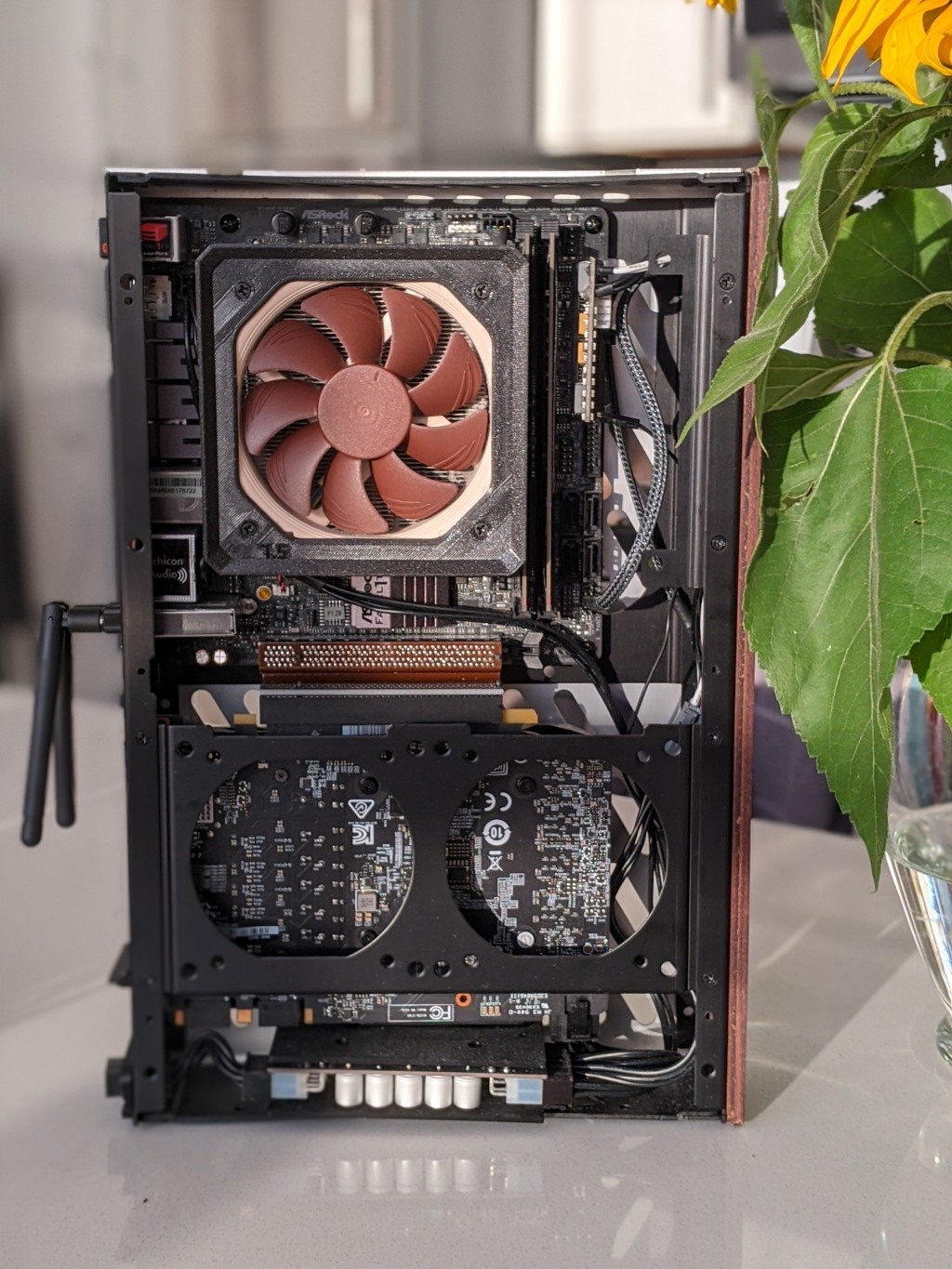
S4M with several of J-Hack’s products